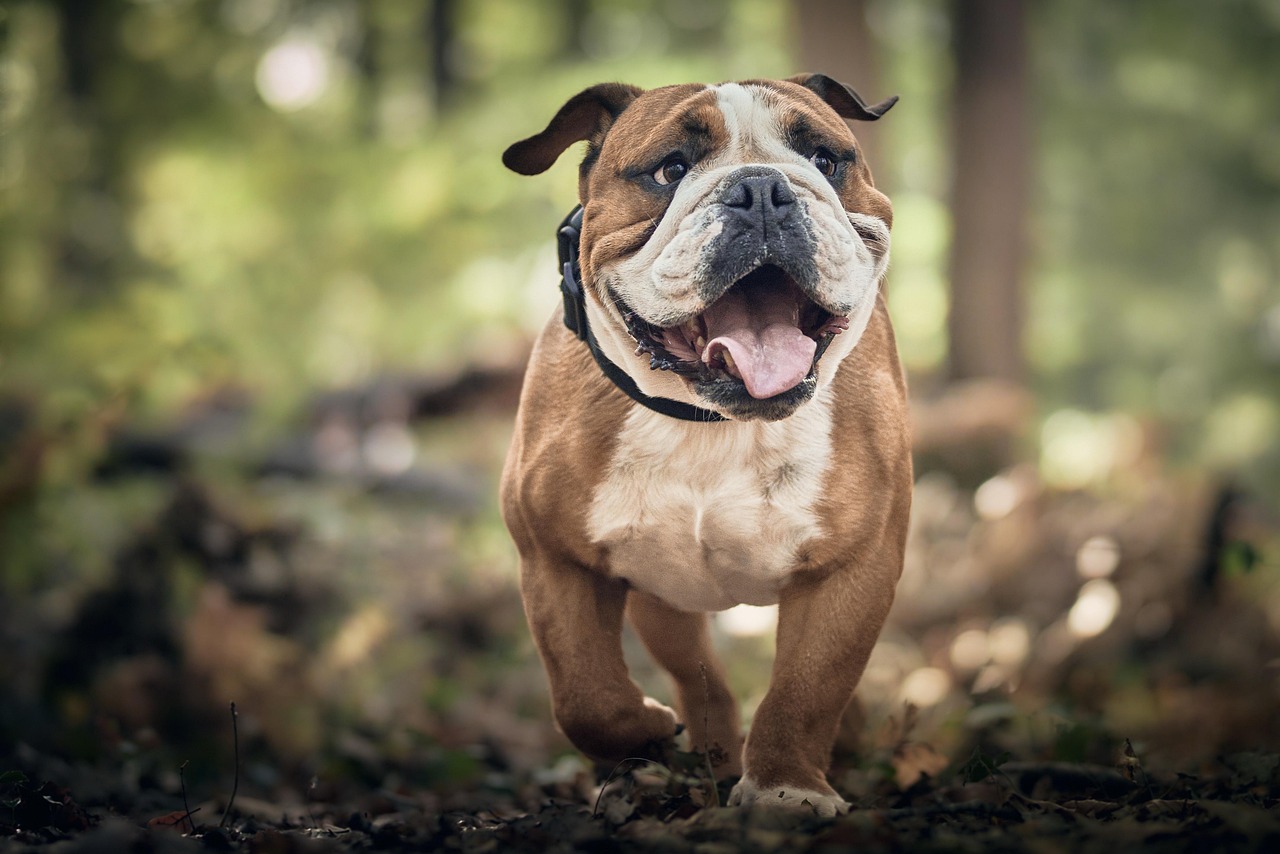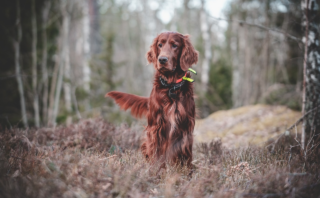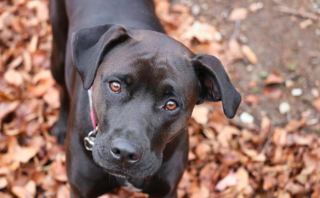Dog Training for Kids: 10 Simple and Fun Tips
Introduction
Training a dog can be a rewarding experience for kids. It can teach responsibility, patience, discipline, and compassion. The process also significantly enhances the unique bond between a child and their pet.

This article delves into easy and kid-friendly methods to train dogs efficiently. Kids can expect to understand basic commands, positive reinforcement techniques, and behavioral responses. This article will serve as a valuable guide for kids eager to embark on a fruitful dog training adventure. Let’s dive in!
Brief overview of the importance of dog training for kids
Dog training is more than teaching commands; it builds a vital connection between children and their pets. It involves instilling respect for animals, fostering a sense of responsibility, and enhancing communication skills. Kids who engage in dog training learn patience and empathy, crucial life skills. Training can also ensure the dog behaves appropriately around the child, thereby, reducing potential conflicts or injuries. Thus, dog training for kids is a beneficial activity that contributes to more harmonious, safer, and enriched child-dog relationships.
The role of kids in training dogs
Kids can play a crucial part in dog training. They not only create fun and engaging learning experiences for dogs, but also promote compassionate animal handling. It enriches youngsters’ sense of responsibility and communication skills. While teaching basic commands, kids can also learn patience and empathy. Safety should be prioritized, and guidance is necessary. Hence, an adult should supervise during the training session. In this way, the bonding between kids and pets strengthens, promoting mutual respect and love.
Understanding a Dog's Psychology
Understanding a dog’s psychology is pivotal in successful dog training. Canines communicate differently than humans, often through body language. Recognizing and respecting this facilitates better interaction. Dogs also thrive on structure; consistent training schedules foster discipline. Moreover, positive reinforcement plays a key role in dog psychology. Rewards for good behavior helps them distinguish right from wrong. Lastly, remember dogs are social animals, valued companionship highly. Fostering a strong, loving bond with your pet enhances training outcomes.
Insight into a dog's mindset
A dog’s mindset revolves around instincts, loyalty, and trust. Dogs are pack animals, perceiving their human caregivers as leaders. Training should be gentle yet assertive, focusing on positive reinforcement. Dogs respond well to consistency and predictability, which fosters trust. Understanding your dog’s perspective will help you connect better with them. Patience and persistence are key, as trust cannot be built overnight. Remember, your dog wants to please you, so make training a positive experience for both of you.
How Dogs Learn and Respond to Instructions
Dogs primarily learn through positive reinforcement and associative learning. When a behavior is followed by a reward, such as praise or treats, they’re more likely to repeat it. Additionally, dogs use “associative learning”, meaning they connect a specific action with a result. For commands, dogs learn to connect the sound of a particular word with a certain action. Patient repetition and consistent rewards are key in teaching dogs to understand and follow instructions.
The importance of consistent messaging in dog training
Consistent messaging is vital in dog training, especially for kids involved in the process. Animals, like humans, thrive on certainty and predictability. By consistently using the same commands and rewards, your dog will understand what is expected from them quicker. This habit also helps a child learn responsibility and understanding. Remember, inconsistent instructions confuse dogs and might delay the training process. So, always keep your messaging consistent to cultivate discipline effectively in your four-legged friends.
Easy Techniques for Kids to Train Dogs
Firstly, it’s crucial that kids understand the importance of patience and consistency in dog training. Simple commands like ‘sit’ and ‘stay’ can be taught easily using rewards like treats or praises. The trick is to use positive reinforcement, rewarding the dog immediately after it has obeyed the command. Remember, smaller training sessions with frequent repetitions yield the best results. Lastly, introducing games that incorporate these commands can also make training enjoyable for both the kid and the dog.
Basic commands: Sit, Stay, Come
Training your dog can be a fun and rewarding experience. Start with the basics: ‘sit’, ‘stay’, and ‘come’. To teach the ‘sit’ command, hold a treat above your dog’s nose and then move it back over their head. For ‘stay’, command them to sit, then step back saying ‘stay’. Finally, ‘come’ entails moving away from your dog while encouraging them to follow. Remember: patience and consistency are key in every step. Happy training.
Advanced commands: Paw, Lay Down, Roll Over
Training your dog to understand ‘Paw’, ‘Lay Down’, and ‘Roll Over’ promotes obedience and entertainment. ‘Paw’ encourages useful behavior, like shaking hands. ‘Lay Down’ is pivotal in controlling rampant behavior or while feeding. ‘Roll Over’ is an engaging trick that stimulates physical and mental agility. All these commands rely on patience, repetitive instruction, and rewards. Always begin with simple commands like ‘Sit’ before moving to advanced ones. Remember, training should be a fun, bonding process, not a challenge.
Making Training a Fun Game for Kids and Dogs
Making dog training exciting for kids involves incorporating fun-filled activities. Coupling the training with games ensures both the kid and dog are actively engaged. Games such as fetch, hide and seek or agility-based tasks can make the learning process enjoyable. It’s also critical to make rewards part of the process – any positive action should get praise or a treat. This approach elevates the training to playtime, helps in the establishment of a strong bond, and accelerates the learning progress.
Using positive reinforcement and rewards
For effective dog training, kids should use positive reinforcement, employing rewards to encourage desirable behaviors. This method involves catching good conduct, like sitting or staying, and promptly praising or giving the dog a treat. This reinforces the dog’s understanding that it has done something right. Positive reinforcement is a favorable tool as it encourages repeat behavior, strengthens the child-dog bond, and promotes a learning environment free from fear and punishment, making it an excellent training technique.
Safe Interaction and Handling
Understanding how to safely interact with our canine friends is essential, especially for children.

Here kids learn to approach dogs gently and respectfully. They’re taught never to provoke or disturb them while they’re eating or sleeping. Basic handling techniques, like proper leash holding, are also covered. Children also learn how important it is to ask for an adult’s help when a dog seems agitated or unwell. Thus, keeping interactions safe and positive for both child and dog.
Teaching kids how to approach and touch a dog
Teaching kids to approach dogs safely is key in preventing unfortunate incidents. Begin by encouraging children to be calm. Teach them to ask for the pet owner’s permission before approaching. They should approach from the front, so the dog sees them; no sudden movements. Touching should start gently, preferably on the dog’s back. It’s critical not to touch a dog’s face, tail, or paws as these areas are often sensitive. Children should never approach a dog that’s eating, sleeping or caring for puppies.
Recognizing dog body language and signs of discomfort or aggression
Learning to interpret canine body language aids in understanding dogs’ emotions and intentions. Dogs can’t speak, but their bodies communicate volumes. A wagging tail can denote joy, while a stiffened posture, growling, or showing teeth may signify aggression. Ears pinned back or lowered body often convey discomfort. By correctly reading these signs, children can interact safely, bolster a healthy relationship with their pets, and potentially avoid triggering defensive aggressive responses.
The importance of supervision during training
Training involves teaching dogs commands and good behavior. Adequate supervision during training is crucial to ensure safety and efficient learning. For kids, this means making sure they use positive reinforcement techniques, avoid harsh discipline, and manage their pets’ behavior carefully. Moreover, supervision allows adults to intervene if the pet acts aggressively. Thus, not only does this result in better trained dogs, it also helps boost children’s confidence as they take on this caring and responsible role of a pet owner.
Dealing with problematic behaviors: Biting, Jumping Up
Biting
Biting often stems from a dog’s natural instinct. It’s essential for kids to learn not to play too roughly, as this could invite biting. Rewarding dogs when they don’t bite can also be useful.
Jumping Up
Dogs jump up due to excitement or seeking attention. Children should understand that rewarding this behavior only encourages it. They should remain calm and ignore their dog when it jumps up – attention should only be given when the dog calms down.
The Benefits of Dog Training for Kids
Dog training promotes multiple benefits for children. It facilitates a nurturing environment for children to learn responsible behavior and increases their bonding with their furry friends. The process can also assist children in developing strong communication skills and encourages understanding, empathy, and kindness. Moreover, the activity provides health benefits as it involves physical engagement. Dog training can thus be an effective method to foster essential attributes in children, making it an integral part of their overall personality and character development process.
Responsibility and patience: Life skills that dog training cultivates in kids
Through training their dogs, kids cultivate essential life skills such as responsibility and patience. With consistent practice, they learn that success requires dedication and effort. Furthermore, caring for their pets instills a sense of responsibility, as they understand that their dog’s well-being depends on them. Besides, waiting for dogs to obey commands teaches patience. Hence, dog training not just enhances the bond between kids and their pets, but also aids in character development.
Bond strengthening: Dog training as a way of building better relationships with pets
Dog training isn’t just about teaching commands; it’s a potent tool to strengthen bonds. It enables kids to understand their pets better, thereby promoting empathy and responsibility. Training sessions foster communication, instilling trust and mutual respect. Moreover, a well-trained dog exhibits behavior that’s more predictable, making interactions safer. Thus, dog training, for kids, serves as an engaging and educational experience, strengthening the unique bond they share with their furry companions.
Confidence Building: How succeeding at dog training can increase a child's self-esteem
Dog training offers children a unique opportunity to learn responsibility and develop patience. As a child trains a dog and begins to notice the positive results of their efforts, their sense of competence and self-worth can increase. They begin to realize their capabilities and develop a stronger self-esteem. Dog training promotes feelings of accomplishment, providing an undeniable boost to the confidence of your child, which permeates all areas of their life. Thus, dog training helps build self-esteem in children.
Conclusion
Teaching children how to interact safely with dogs equips them with effective canine communication skills, engendering lasting bonds. As we’ve discovered, dog training for kids can be effective and fun if proper methods are used. This fosters empathy, responsibility and builds self-confidence in children. However, always remember, adults should supervise interactions between kids and dogs for added safety. In sum, instilling dog training principles in kids, will help shape them into responsible, dog-loving adults.
Reiteration of the importance and benefits of dog training
Dog training undoubtedly lays an essential groundwork for kids and their pets. It not only enhances the dog’s behavior, but gifts kids with a disciplined companion. Training instills obedience, ensuring safety of the child. It nurtures the bond of friendship, promoting mutual respect and love. Moreover, it equips kids with responsibility, patience, compassion, and leadership skills. Therefore, understanding and leveraging the importance and benefits of dog training offer an enriching experience for the young minds.
Encouragement for ongoing practice and patience in the training process
Dog training requires patience, consistency, and continuous practice—it’s not an overnight task. Kids should be encouraged to persevere during training sessions, rewarding their dog’s incremental progress. Learning peaks and troughs are normal during any training process. Over time, dedicated and consistent patience will lead to remarkable results.
Frequently Asked Questions
1. What is the best age for kids to start dog training?
The best age for kids to start dog training varies depending on the child’s maturity and the dog’s temperament. However, many experts suggest that children around the age of 6 and up are generally ready to assist with dog training under adult supervision. It’s crucial to ensure that the child is capable of understanding and respecting a dog’s boundaries.
2. Can dog training be a part of my child’s development?
Absolutely! In fact, dog training can be a very beneficial part of a child’s development. It teaches them responsibility, empathy, patience, and commitment. It also provides them with an understanding of animal behavior and reinforces the concept of cause and effect.
3. What type of training methods should kids use?
When it comes to dog training for kids, positive reinforcement is the recommended method. This involves rewarding the dog for good behavior, which encourages the dog to repeat that behavior. Rewards can be treats, toys, praises, or anything else the dog finds enjoyable. It’s important to note that children should never use punishment-based methods, as these can lead to fear and aggression in dogs.
4. How can I ensure my child’s safety during dog training?
Supervision is critical during dog training sessions with children. Make sure the child knows never to approach a dog that is eating or sleeping. Also, they should avoid any rough play that could potentially agitate the dog. Teach your child to understand a dog’s body language to recognize any signs of stress or fear.
5. How long should dog training sessions be for kids?
Dog training sessions for kids should ideally be short and sweet, around 5-10 minutes at a time. Dogs, especially puppies, have short attention spans and can become frustrated or disinterested if sessions go on too long. It’s best to have a few short sessions throughout the day.
6. Can my child train our older dog, or is it only suitable for puppies?
While it’s often said that “you can’t teach an old dog new tricks”, this isn’t true. Dogs of all ages are capable of learning new behaviors and commands. However, bear in mind that older dogs may require more patience, as it might take them a little longer to pick up new things compared to a young puppy.
7. What should my child do if the dog doesn’t listen?
It’s important for your child to understand that training takes time and patience. They should never shout at or punish the dog for not following a command. Instead, they should remain calm, patient, and consistent. If the dog is consistently not listening, it might be a good idea to consult with a professional dog trainer for advice.
Conclusion
In conclusion, dog training for kids plays a pivotal role in nurturing responsible pet ownership, fostering empathy, enhancing communication skills, and developing a strong bond between the child and the dog. It also provides children an opportunity to understand dog behavior and to learn how to treat animals with kindness and respect. It is an educational and fun activity that can contribute significantly to a child’s personal development.
Moreover, dog training should be conducted under the guidance of an adult or a professional dog trainer to ensure safety. It should be a process that encourages positive reinforcement techniques rather than punishment. The benefits of dog training for kids are manifold, but it must be approached with patience, consistency, and commitment. Ultimately, when children engage in dog training, they not only help in teaching their pets but they also learn valuable life lessons along the way.



